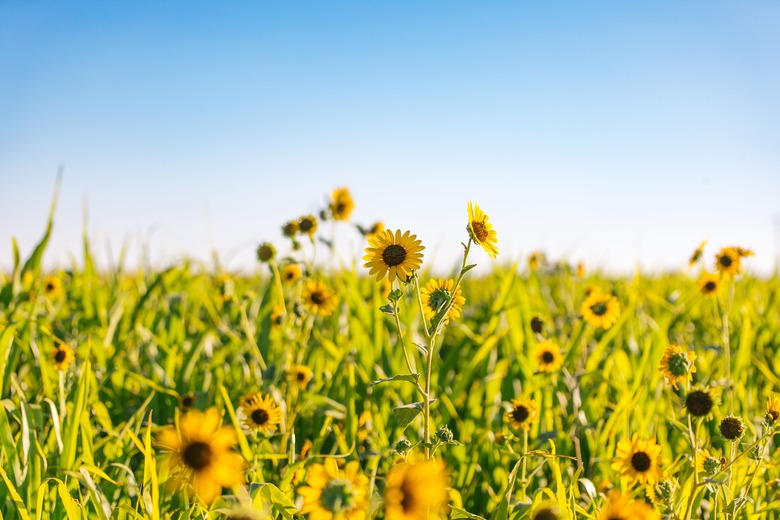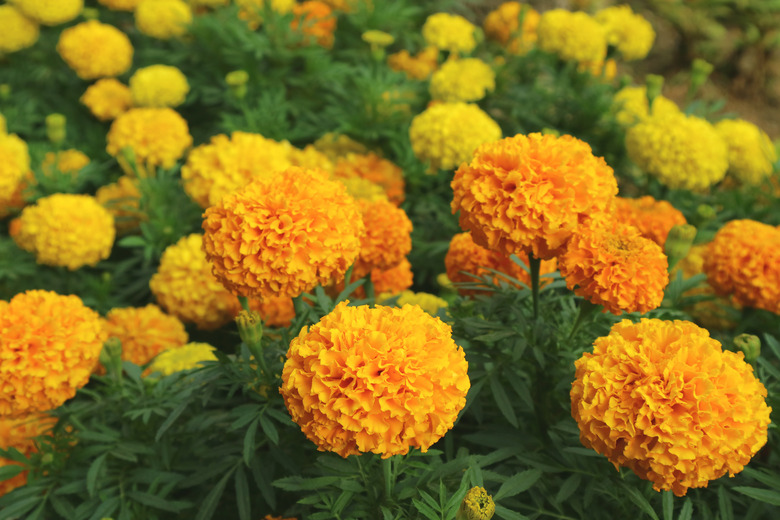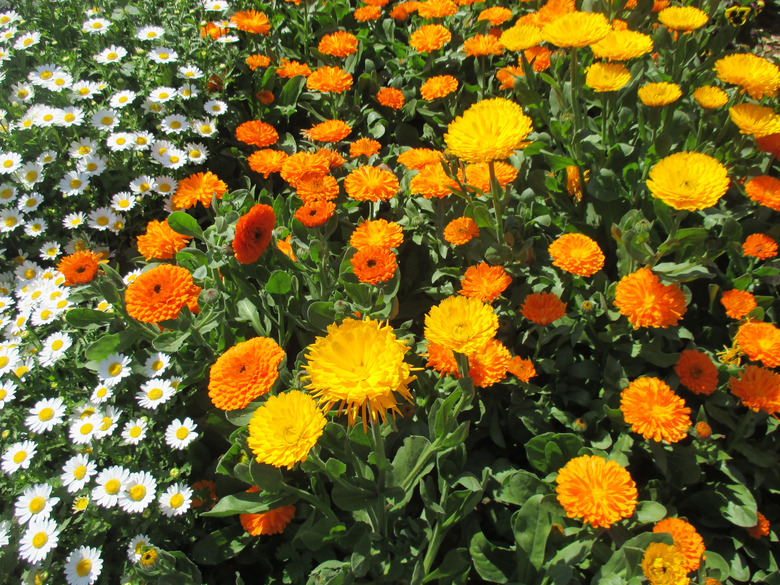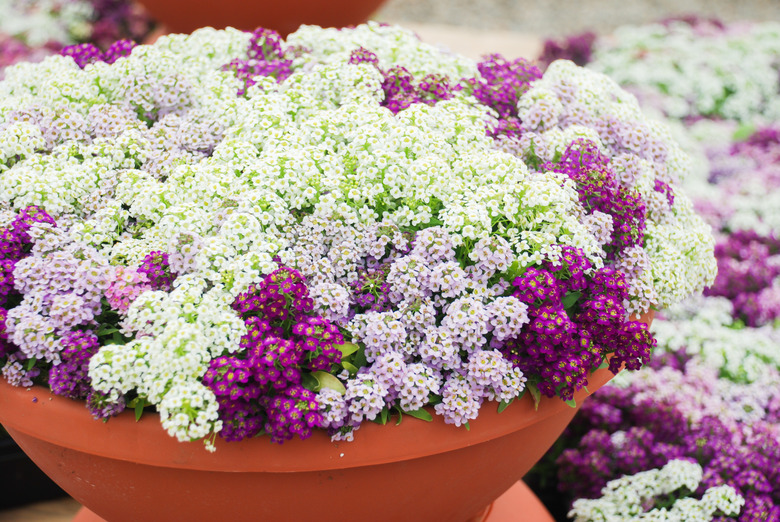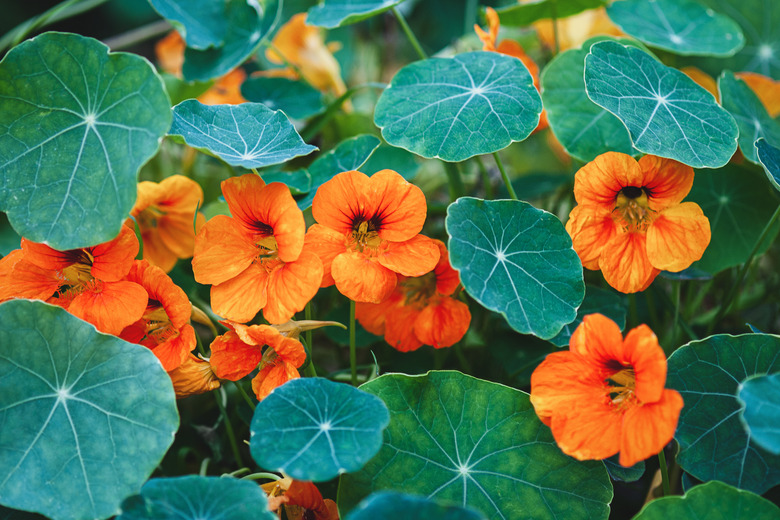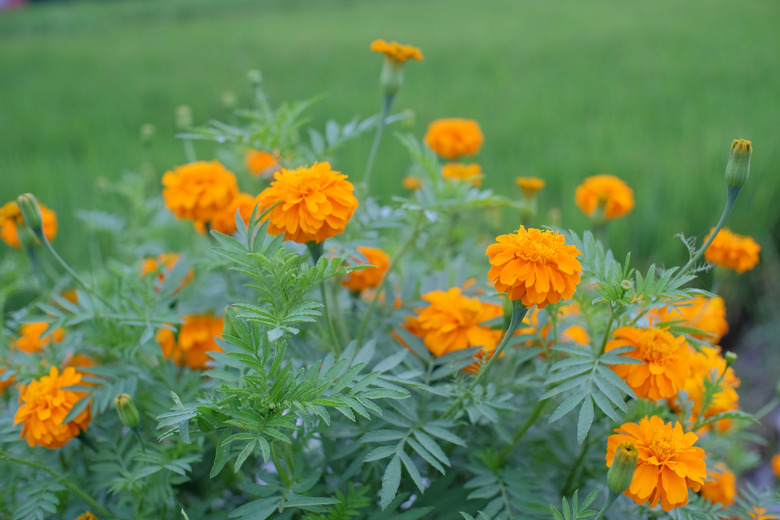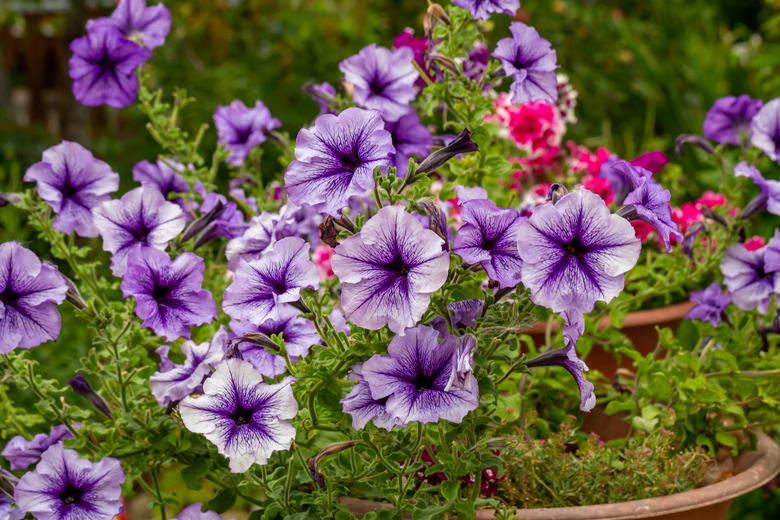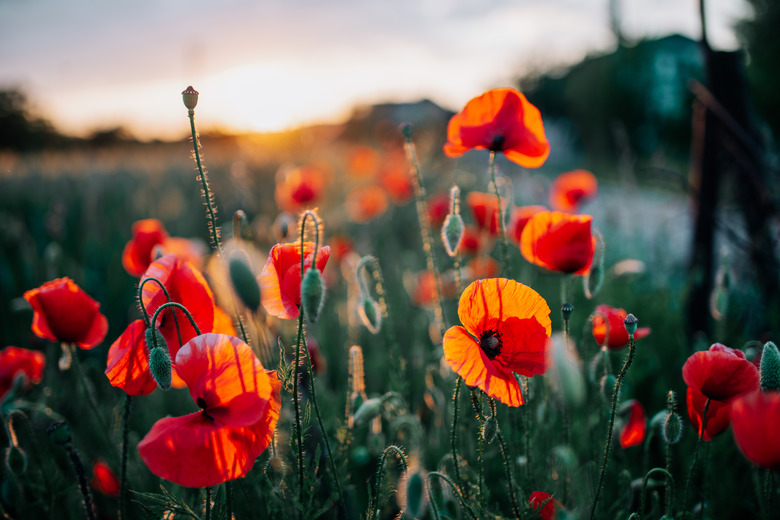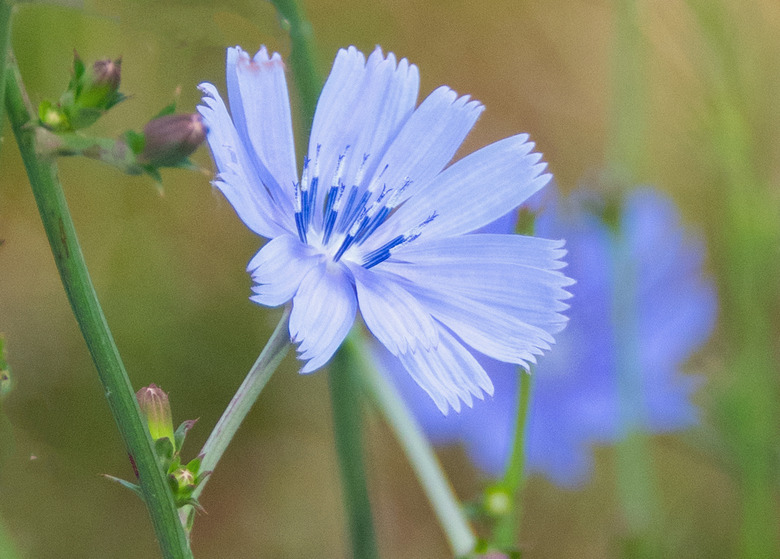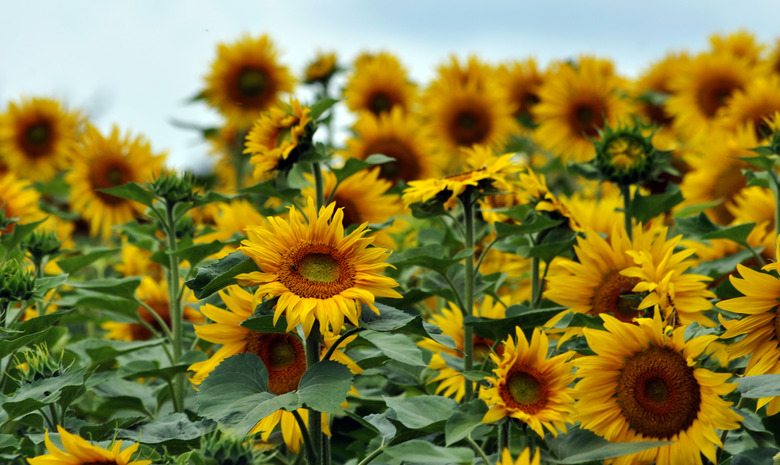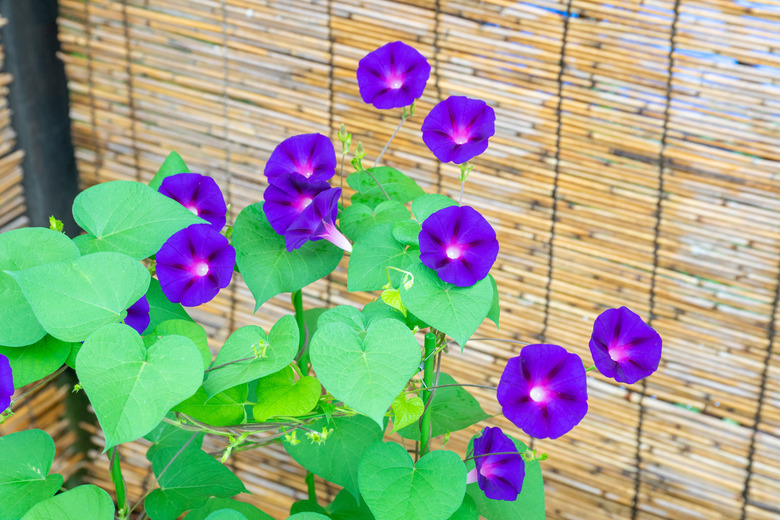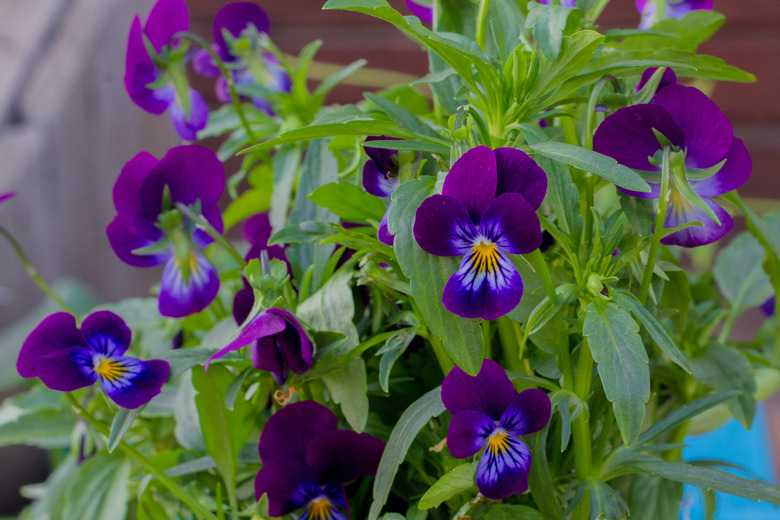The Fastest-Growing Flowers: From Seed To Bloom
We may receive a commission on purchases made from links.
Many flower gardens burst into full color by midsummer, but it's nice to have a few fast-growing flowers to bring some color in the late spring or early summer. Bees, butterflies, and hummingbirds appreciate the early blooms as much as you do, and the more busy pollinators you attract early in the season, the better the chances they will hang around to benefit your late bloomers.
Many of the fastest bloomers are hardy in a wide range of growing zones and are drought tolerant, and some are native species that may even appear as volunteers in nearby fields. Planting them is as easy as dropping seeds in fertile soil, and since you won't have to stress out to maintain them, you can focus your attention on appreciating your garden, which is the primary reason you're growing flowers. Here are 11 fast-growing flowers to plant in your garden to get a jump-start on summer.
1. Marigolds
1. Marigolds
Not only do marigolds (Tagetes spp.) show their yellow, orange or copper-colored petals early in the season but they maintain them throughout the summer. Some species are perennials in their native habitats, but all can be grown as annuals in United States Department of Agriculture (USDA) hardiness zones 2 through 11. Seeds take about a week to germinate, and after that, blooms will appear in as few as eight weeks. American marigolds (Tagetes erecta), sometimes known as Aztec or Mexican marigolds, resemble lush, golden pom-poms and grow to a height of 3 or 4 feet, while French marigolds (Tagetes patula) grow bushier and shorter.
Marigolds are fast-growing flowers that attract pollinators, and some are edible, although they have a somewhat bitter taste, which is probably why they repel deer and rabbits. Marigolds like full sun, and they prefer fertile soil, but they aren't particular.
2. Calendulas
2. Calendulas
Calendula (Calendula officinalis), sometimes called pot or English marigold, is unrelated to marigold, but it looks similar and blooms just as quickly. The plant is medicinal, and the flowers are edible, and like marigolds, it grows as an annual in zones 2 through 11.
Despite being different species, calendula and marigold are so much alike that it's difficult to tell them apart, and it's important to do so because not all marigolds are edible. Calendula seeds are brown, while those of marigolds are black. Calendula petals can be used as a substitute for saffron, and oil derived from the flowers has long been used a skin ointment to heal wounds and treat eczema and diaper rash.
3. Sweet Alyssums
3. Sweet Alyssums
As it creeps along the ground, sweet alyssum (Lobularia maritima, USDA zones 5-9) covers your flower bed with four-petal white, purple, and pink flowers shaped like crosses and exuding a sweet fragrance. It's a cool-season flower native to the Mediterranean region, and it doesn't like the heat and dryness of summer when it fades only to return again in the fall. It's a perfect plant for spring color because if you sow alyssum flower seeds immediately after the last frost, you'll have blooms eight weeks later.
Alyssum likes full sun and loamy soil, although it is often found growing on beaches, sand dunes, and even walls. The key is to ensure the soil is well-draining, as alyssum won't do well in bogs or standing water.
4. Nasturtiums
4. Nasturtiums
Nasturtium (Tropaeolum) seeds are large — about the size of chick peas — and need to be buried 1/2 inch deep with a spacing of 10 to 12 inches, and when you do this, the seeds will sprout in seven to 10 days, and flowers will appear just over a month later. Nasturtiums are ridiculously easy to grow, growing as annuals in zones 2 through 11 and actually preferring nutrient-deficient soil, so you can basically just sow the seeds and forget about them.
Besides adding garden color, nasturtium flowers add spiciness to salads, and the red, yellow, and orange flowers are often used as a garnish. The immature seed capsules are also edible and when marinated in brine, they taste like capers. Gardeners often plant nasturtiums with tomatoes and other vegetables as a trap crop to attract aphids and other insect pests.
5. Zinnias
5. Zinnias
Zinnias (Zinnia spp.) are a sure-fire way to bring early color to any garden as annuals in zones 3 through 10, which is basically most of North America. The eye-popping yellow, red, pink, and purple blooms attract pollinators and begin to appear a mere six to seven weeks after direct-sowing the seeds. Zinnia seeds should be planted in full sun and well-draining soil. Some types grow small enough to make good border plants, while others grow tall enough to dominate the garden. Popular in cutting gardens to supply bouquets and flower arrangements with a long vase life, zinnias can thrive just as easily in containers as they do in garden beds.
6. Petunias
6. Petunias
Petunias (Petunia spp.) are native to Argentina and grow as perennials in zones 10 and 11 and elsewhere as annuals. Once the seeds have been sown 1/4 inch deep in well-draining soil, they will germinate quickly — in as few as three to four 4 days — and will flower in six to eight weeks.
Petunia cultivars can produce large, medium, or small flowers, and some cultivars tend to grow low and creep along the ground, so they make good ground covers. Smaller petunia plants typically are the fastest bloomers. Petunias come in a wide variety of colors, including white, red and purple, and the striking black velvet petunia is as black as coal.
7. Poppies
7. Poppies
A native wildflower in most Western states — not just California — the California poppy (Eschscholzia californica) is a fast bloomer that will flower from 60 to 75 days after germination. It's self-seeding, so all you have to do is remember to leave a few of the blooms on the plant to have a new batch of delicate wildflowers the following year.
California poppies grow as perennials in hardiness zones 6 through 10 and as reseeding annuals elsewhere. Bees and butterflies love them, but deer and rabbits stay away, and they like full sun but aren't particular about soil quality, although the soil should drain well.
8. Cornflowers
8. Cornflowers
One of the common names of Centaurea cyanus, cornflower, comes from the fact that these flowers are often found growing wild in cornfields, and the other popular name, bachelor's buttons, reflects the fact that the frilly red, white, or blue flowers are often worn by the groom and best man at weddings.
They grow as annuals in zones 2 through 11 — just about anywhere — and in most places, if you sow the seeds in late March or early April, you'll have blooms by early June. They are prolific reseeders, which means that if you leave the spent blooms on plants, the dropped seeds will overwinter and produce new flowering plants the following year.
Cornflowers respond well to soil amendments, such as compost, and blooms will be bigger and lusher if the soil is fertile. They like plenty of sun and moisture, especially during the early spring growth spurt.
9. Sunflowers
9. Sunflowers
They won't bloom as fast as some other flowers, but annual sunflowers (Helianthus annuus) still grow surprisingly quickly in zones 2 through 9, reaching their full height of up to 12 feet, depending on cultivar, in just three months, averaging an inch or more of growth a day. It's hard not to be impressed by the giant, daisylike flowers of the larger cultivars towering over the garden, catching and reflecting the sun and producing seeds that you can use to attract birds or roast and eat yourself.
Once the seeds start to fall, you can cut the flower and collect the seeds for sowing the following year. Many cultivars, however, will not produce viable seed, so if you're planning to save seeds from year to year, be sure to grow heirloom sunflowers. True to their name, sunflowers thrive in full, hot sun, and they like moist, well-draining soil.
10. Morning Glories
10. Morning Glories
If you have a fence or a trellis in the garden, you can make good use of it by planting morning glory (Ipomoea spp.), a climbing vine that will quickly cover it with delicate and showy pink, purple-blue, magenta or white flowers. The flowers don't last long, opening in the morning and dying by the end of the day, but the plant makes up for the short-lived blooms by producing a lot of them.
Seeds need to be soaked for 24 hours and sown 1/2 to 1 inch deep, spacing them 4 inches apart, but they germinate rapidly after that, and if you sow the seeds in full sun on well-draining soil in early April, you can expect flowers by June. Morning glories grow as annuals in zones 2 through 11, and they are known to be aggressive self-seeders, so they will probably reappear the following year. The seeds contain LSA, which is related to LSD but is more toxic, and even though they have been used by indigenous people in medicine ceremonies, they are considered toxic.
11. Wild Pansies
11. Wild Pansies
Imported to North America from Spain, Johnny Jump Up (Viola tricolor) has many names, including wild pansy and garden violet, but the common name Johnny Jump Up reflects the fact that this wildflower often pops up unannounced in fields and gardens. Typically grown as an annual, Johnny Jump Up is a short-lived perennial or biennial in zones 2 through 9. It's slow to germinate when it grows from seed, but it makes up for that by swiftly blooming, and it can fill your garden with tiny yellow-violet blooms by mid-spring.
Violas are the parent plants of pansies, which explains why Johnny Jump Up is often characterized as a miniature pansy, and they are frost tolerant to a degree, so you can sow seeds early for early blooms. Johnny Jump Up flowers, like nasturtiums, are edible and make great garnishes, and because the plant is self-seeding, you'll have some next year too.
